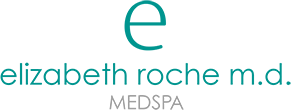If you’ve felt that your skin is showing the signs of aging—age spots, wrinkles, crow’s feet, and the like—then you might benefit from a laser resurfacing outpatient procedure. It’s a quick and safe way to reduce the signs of aging and can help you start loving your skin again. Here’s the answers to your most crucial questions about laser resurfacing.

What is Laser Resurfacing?
Laser resurfacing, also called a laser peel or a lasabraison, is a minimally invasive procedure that uses a laser to eliminate unsightly irregularities from your skin. This is achieved by concentrated bursts of light to remove the uppermost layers of skin, taking the undesirable imperfections with them and reducing the signs of aging.
There are actually two different kinds of laser resurfacing—carbon dioxide (CO2) and erbium. CO2 eliminates surface level skin cells and can take the form of short pulses or a continuous laser delivered in a scanning pattern. This results in minimal heat damage, but it does generally require about two weeks of recovery time.
Erbium is more suited for moderately deep lines, scars, and wrinkles. Designed to minimally affect the surrounding tissue, erbium laser resurfacing may result in fewer side effects than CO2 and a shorter recovery period—as little as a week.
What Kinds of Skin Irregularities Can Laser Resurfacing Treat?
Laser resurfacing can treat wrinkles, sun damaged skin, and acne scars effectively, reducing the signs of aging and facilitating smoother, younger looking skin. The procedure can also help with warts, shallow scars, age spots, enlarged oil glands, sagging skin, and drooping eyelids.
Unfortunately, laser resurfacing is not recommended for people currently struggling with acne nor is it effective against stretch marks.
Will Laser Resurfacing Hurt? Does It Have Side Effects?
If proper steps are taken, it should not hurt. Most patients who have their full face treated do well with the application of a topical local anesthetic applied a half an hour before the procedure and taking a dose of an anti-inflammatory medication such as acetaminophen or ibuprofen. Occasionally if a patient is anxious, an oral medication may be needed to help relax them.
Immediately following the procedure, a cool ointment will be applied so that the ablated skin is protected.
Afterwards, it is normal to experience some swelling in the first twenty-four hours, followed by itching, and dry peeling for a few weeks. Your smoother, younger looking skin will also be more vulnerable to sun damage, so it’s strongly recommended that you limit your sun exposure and use strong sunscreens.
How Long Does Laser Resurfacing Take?
Laser resurfacing can take anywhere between 30 minutes to 2 hours, depending on the size of the area treated—a full face procedure will take longer than just the area around the eyes.
What Will I Need to Do to Be Ready For Laser Resurfacing?
The physician or physician assistant performing the laser resurfacing will first want to consult with you on your beauty goals and where you would like smoother, younger looking skin. They will ask you not to take medications and supplements that affect clotting starting 10 days before the procedure, as it could affect the healing process.
Twenty-four hours after the laser resurfacing, you will need to clean the treated area five times a day during the full recovery time and apply anti-scabbing ointments to aid in the healing process.
At the Elizabeth Roche, M.D MedSpa, I or my Physician Assistant are ready to consult with you on how laser resurfacing can help you reduce the signs of aging and achieve the younger looking skin you desire. Contact us today for your consultation.
